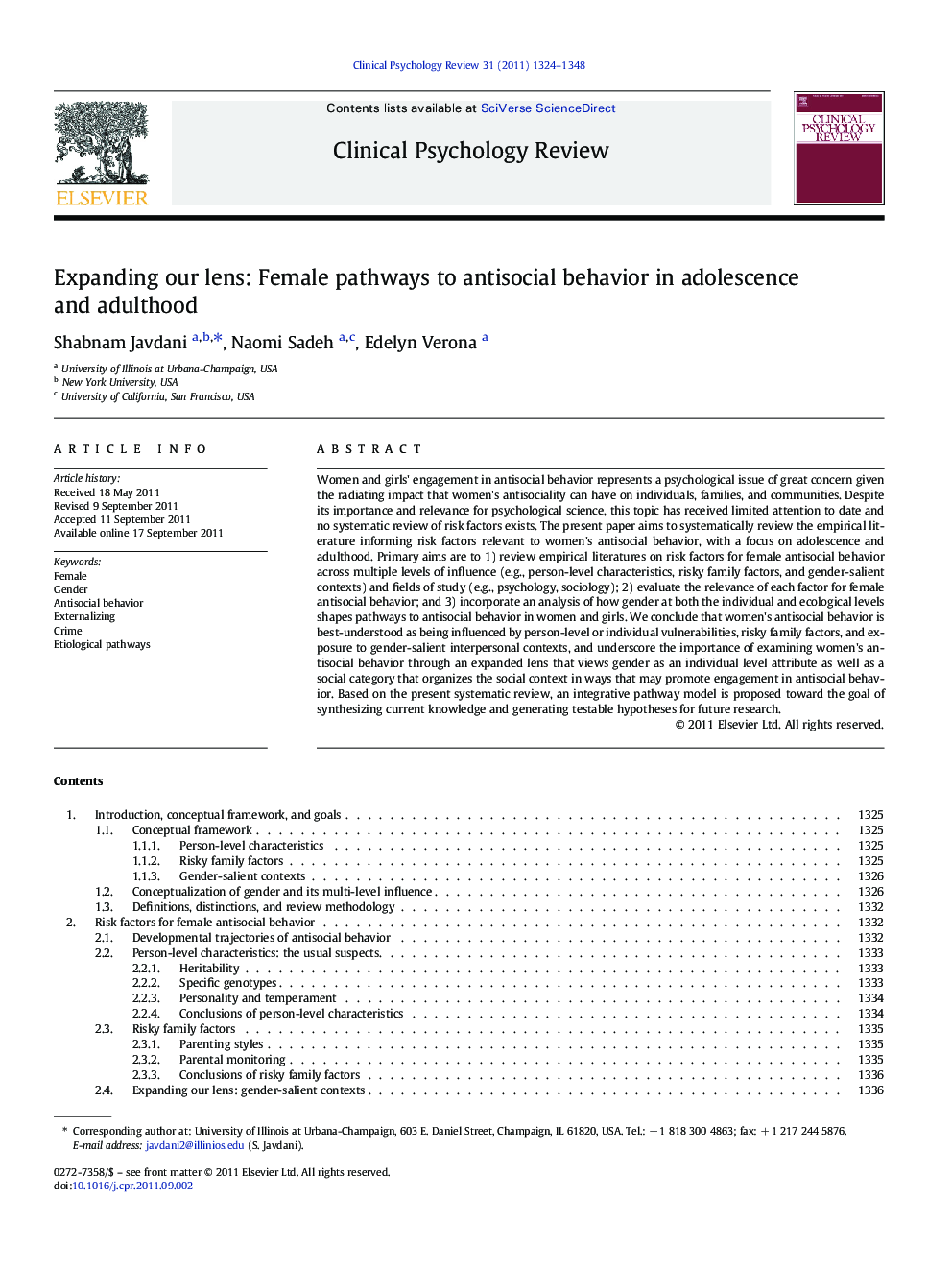| Article ID | Journal | Published Year | Pages | File Type |
|---|---|---|---|---|
| 903733 | Clinical Psychology Review | 2011 | 25 Pages |
Women and girls' engagement in antisocial behavior represents a psychological issue of great concern given the radiating impact that women's antisociality can have on individuals, families, and communities. Despite its importance and relevance for psychological science, this topic has received limited attention to date and no systematic review of risk factors exists. The present paper aims to systematically review the empirical literature informing risk factors relevant to women's antisocial behavior, with a focus on adolescence and adulthood. Primary aims are to 1) review empirical literatures on risk factors for female antisocial behavior across multiple levels of influence (e.g., person-level characteristics, risky family factors, and gender-salient contexts) and fields of study (e.g., psychology, sociology); 2) evaluate the relevance of each factor for female antisocial behavior; and 3) incorporate an analysis of how gender at both the individual and ecological levels shapes pathways to antisocial behavior in women and girls. We conclude that women's antisocial behavior is best-understood as being influenced by person-level or individual vulnerabilities, risky family factors, and exposure to gender-salient interpersonal contexts, and underscore the importance of examining women's antisocial behavior through an expanded lens that views gender as an individual level attribute as well as a social category that organizes the social context in ways that may promote engagement in antisocial behavior. Based on the present systematic review, an integrative pathway model is proposed toward the goal of synthesizing current knowledge and generating testable hypotheses for future research.
► Women and girls' antisocial behavior is a social issue of growing concern. ► This article includes a systematic review of literature on female antisocial pathways. ► Evidence supports distinct female pathways and highlights key areas of risk. ► These include individual, family, and gender-salient social contexts. ► Gender-specific conceptualizations and adolescent development are underscored.
